Climate change
Article curated by Ginny Smith
Scientists agree that human activities are causing climate change, but there are many unanswered questions about it, from how we measure the past to how we measure the future, to the changes we’ll see in the weather and the impacts we’ll see on plants and animals. The Earth is a complex ecosystem, held in a fine balance that allows life to thrive, and offsetting this balance can have massive repercussions... A relatively small change in temperature can have big knock-on effects, and a large change could result in an uninhabitable Earth.
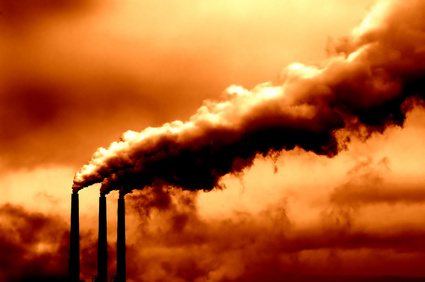
Global Warming
The Earth is protected from the sun by distance, by the atmosphere, and by clouds and ice which reflect back radiation. If more energy is absorbed than emitted, the Earth warms, and if less energy is absorbed than emitted, the Earth cools. Currently, the absorbed solar energy exceeds the emitted thermal energy by just 0.4% - and this gives us global warming.
Greenhouse gases (mostly carbon dioxide, but not only) absorb infrared radiation and re-emit it in all directions. This causes more heat to be trapped within the atmosphere, and cause the warming known as the greenhouse effect.
Humans are contributing to global warming and climate change by emitting more carbon dioxide and other greenhouse gases; however, it is difficult to predict the extent of warming and its consequences, and this is currently something we can only make guesses about.


 2
2The Future
One thing that makes it hard to guess what will happen to the climate is clouds. You only need to feel a cloud to pass across the sun on a hot summer's day to realise hpow big an effect clouds have on the temperature of the Earth. Clouds affect albedo (the proportion of light which gets reflected back into space), but are also made of water, which acts as a greenhouse gas, keeping the heat of the earth trapped in the lower atmosphere. These two opposite effects make the cloud contribution to global warming complicated and hard to measure or predict! Because of this, we do not yet know the net contribution to global climate from clouds.

Even when we have data, guessing the future is hard. This is because we need to extrapolate: and extrapolation is tricky. It involves taking known, reliable data, and guessing at how it behaves outside the measured spectrum – and that is something we just don't know. To extrapolate data, scientists make assumptions that things will continue to behave as they did before (and they might not). To estimate global warming, scientists have to make all kinds of assumptions, from population sizes to dietary patterns round the world to what we’re using to generate energy; there is so much uncertainty in these things that it makes their predictions unreliable. This is why most climate models use three models: “most likely”, “worst case scenario” and “best case scenario”, and compare their results.


One way scientists have tried to measure past temperatures is using fays stored in the pores of ice cores. Algate which live there secrete fats that can be profiled using gas chromatography to work out their structures – and these turn out to be very interesting: the fats have much the same framework structure, but differ in their degree of unsaturation. Just as more saturated fats like butter are harder than margarine, the level of unsaturation changes how runny the algae fats are. In fact, algae always want fats of the same runniness... but when it’s colder the fats set more easily, so they make runnier ones, and when it’s warmer, they make less runny ones. This means scientists can use the leftover algae fats in ice cores laid down during different time periods (and can be time stamped by carbon dating other biological material), to record past temperatures.


Another way to learn about past climates is to study the behaviours and migrations of indicator species such as bats. Bats have a profound effect on biodiversity and are found all round the world, providing a unique opportunity to examine planetary symbiosis. Bats are seed dispersers, material and nutrient distributors (encouraging habitat development and reforestation), pollinators of tropical plants not pollinated by bees, and pest controllers, eating a quarter of their bodyweight in insects and fruit every night. Their diet, location, frequency of death, and what plants grow give us clues about changes in climate and planetary health.


 3
3The Past
Ice ages or glacial periods are times when glaciers cover a large areas of the surface of the earth. We know they have happened in the past from geology and fossil records, but we don’t know when the next one will be. Several factors contribute, including changes in the Earth’s tilt and orbit, atmospheric conditions, volcanism, the sun’s activity and the motion of tectonic plates. This leaves us with an incredibly complex model. While we know all these factors can contribute to an ice age era, we don’t know if all are necessary and to what degree. Developing a means of replicating and analysing the conditions would be the most conclusive way to discover which factors have the greatest effect in altering the earth’s temperature.

Some scientists even argue that there were periods in the earth's history where it was completely covered in ice – the so-called "snowball earth" – when average global temperature were -50 oC as the ice and snow reflected away a large proportion of the sun's radiation. It is thought that these periods were partially caused by a decrease in greenhouse gases, as the activity of CO2 consuming microbes increased due to ideal conditions. As the planet cooled, the activity of these microbes decreased again, allowing greenhouse gases to build up once more, and the snowball earth to end. But while this might have contributed to these eras, it’s not enough to explain the snowball earth entirely. It is likely a number of factors coincided to cause it, but for now how exactly the snowball Earth happened, or whether it even did, is still under debate.

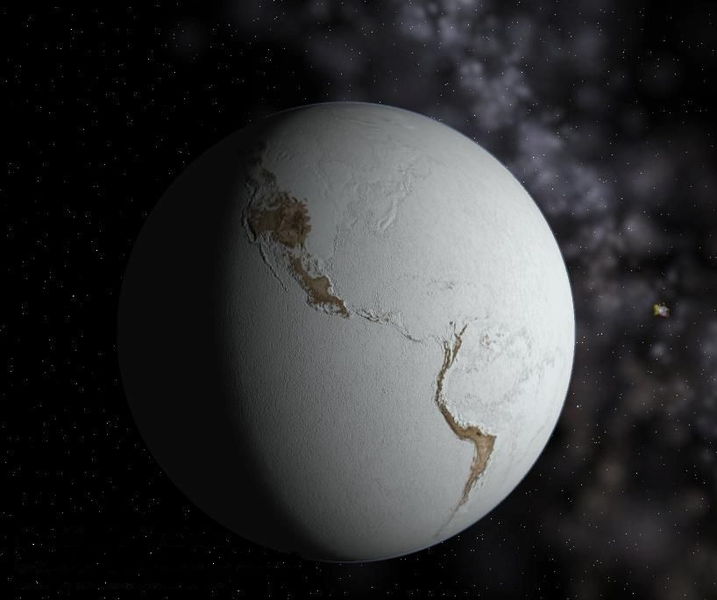
A typical ice age lasts 400,000 years. These are punctuated by interglacial periods or warmer stages, which usually last about 11,500 years. Currently we are 12,000 years into an interglacial period, which could be taken as implying that another ice age is imminent, but scientists aren’t so sure…
This interglacial period might be longer because the Earth’s tilt and its orbit are about 10,000 years out of phase. The earth’s orbit isn’t a perfect circle, we’re sometimes slightly closer to the sun and sometimes further away – giving us seasons. But there’s more land in the northern hemisphere, and more water in the southern hemisphere: although land heats and cools more quickly than water, water retains more heat than land does. So if we were closer to the sun during the northern hemisphere’s summer, the whole earth is cooler.
Given that the tilt and orbit are so out of phase, their cumulative effect is far weaker, hence scientists believe this alteration in conditions might elongate our current warm phase, not to mention human-driven climate change, which adds an unpredictable variable into the mix!

Today
Humans are producing huge amounts of CO2, which is contributing to global climate change. But what exactly happens to the CO2 that we release isn't fully understood. NASA launched the Orbiting Carbon Observatory-2 satellite in 2014 to help map and sample CO2 levels and, hopefully, to find out.
We know that there are natural carbon sinks in the world – areas that absorb more carbon dioxide than they release. Examples of these include bodies of water and plants photosynthesising. Unfortunately, little is known about how much CO2 these sinks can mop up, and whether they will get “full”. Understanding how these sinks work will help to predict the future of climate change, and may even give clues to how we could build artificial sinks to mitigate our own impacts on the environment.

After NASA conducted a study of the temperature of the ocean at depths below 1,995m between 2005 and 2013, scientists have asked whether global warming might be slowing down[1]. Greenhouse gases are still progressively accumulating in the atmosphere, but while surface temperatures and sea levels are still rising, they are not doing so as fast as the gases are being released. So with both the surface and deep ocean temperatures not behaving as expected, we are left asking – where is the missing heat going?

Consequences of climate change
We don't know exactly what will happen if climate change continues unchecked, but one problem that seems unavoidable is the rise in sea levels. As temperatures rise, ice melts and water expands. This could devastate coastal populations of humans as well as animals and plants.
However, we don't yet know how big a problem rising sea levels will be, as there are so many factors to take into account. The rate the ice melts and differences in evaporation and rainfall will have an impact, as will changes in the atmosphere's ability to hold water. While scientists are attempting to model these changes the number of different factors involved, and the fact that they are all interrelated, makes this a very challenging task.
Learn more about Rising Sea Levels.

 2
2
Devastating ice melt are already happening. A huge ice shelf (Larsen B) in the Antarctica Peninsular, the size of greater London, melted in under a month. This occurred as a result of a rise in temperature five times the global average over the last century, which caused some of the ice to melt. First, water formed lakes over the ice shelf, then these drained into each other, leading to the collapse. Scientists are still investigating how it happened and its consequences to habitats and sea levels.

It's hard to make predictions about rainfall. Even when we can predict higher annual rainfall globally, this doesn't tell us what happens locally. There will be winners and losers in climate change, with some areas affected more drastically than others. Models mainly suggest that even if global rainfall increases, dry areas may become drier, depriving certain areas of water to drink and feed crops and livestock.

 3
3A number of previously unseen or changing atmospheric phenomena may also result from climate change. One of these is polar mesospheric clouds, also known as noctilucent or night shining clouds. These clouds form at 76-85km above the Earth, where they are illuminated by the sun even when it is below the horizon, giving them an eerie glow. They form over both poles during the summer, and have been observed since 1885, but their brightness and frequency seems to be increasing. They are also being seen at lower latitudes, and are commonest 20 days after the summer solstice. Although we don't know how or why they form, it is thought that their increase could be linked to differences in atmospheric temperature due to climate change.

So we’ve mentioned the sea and the sky, but what about land? Contaminated land is a forgotten risk of climate change. Lots of land is “contaminated land”. This doesn’t mean it glows yellow in the dark or is a breeding site for mutant flesh-eating bacteria. Most land is contaminated by waste from agriculture, industry, energy or medicine, and that can be anything from fertilisers that cause algal overgrowths to pharmaceuticals that make male fish feminine[2]. Following extreme weather events, local contaminants may be transported hundreds of miles. This can happen on unpredictable timescales, on difficult-to-access land, and leave contaminants so spread and dilute they’re almost impossible to detect – whilst still affecting ecology and human health. In particular, we know so little about groundwater, where research lags behind that of surface water, and requires concurrent knowledge of rock types and permeability, which is rarely found amongst specialists. Climate change calls for flexible risk assessments of contaminated land and ever-evolving, best practices based on “living” documents. This could change not only how we think about risk, dealing with risk and the weather, but also how we develop land, work with other scientists and plan for the future.


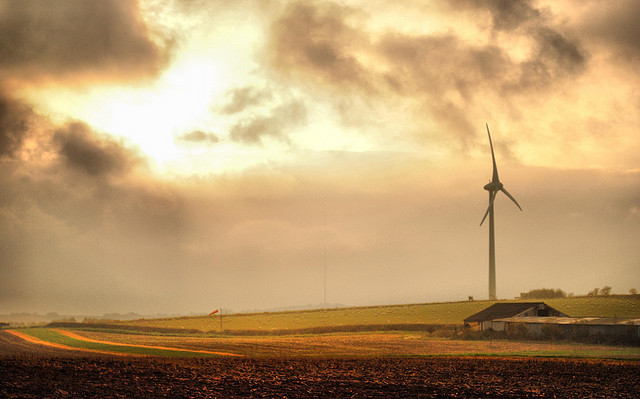
We’ve long known that ecosystems impact the environment and that the environment impacts ecosystems, but we’ve not always been able to model it in a predictive way. Whilst some simple concepts can be explored, like the effect of depleting fox numbers on rabbit populations, new discoveries of trophic cascades – the impact of top predators on the whole chain, such that depleting whale numbers may deplete krill numbers because of the way the predators make the environment habitable – points to the complex relationship between the natural environment and ecosystems.


 2
2So can animal species adapt to changing conditions? It’s impossible to predict how every species will cope. Those that are likely to be hardest hit are the ones living in areas with very little temperature fluctuation, such as the poles or the tropics. These creatures are perfectly adapted for the temperature they live in, and even small changes could prove devastating.
Some believe many species are already at their upper limit of heat tolerance, and that natural selection will not outrun climate change. If even one species nears extinction it can unbalance the ecology completely, causing a chain reaction and affecting multiple species that were reliant in some respect on the now extinct species, whether directly or indirectly.
Learn more about Evolution and Climate Change.


 4
4Extremophiles, more unusual lifeforms that linhabit the more unforgiving pockets of the earth, such as glaciers, are especially at risk. When the glaciers melt, less water is locked up as ice and more is available as freshwater for life. Recent research suggests that this boosts the number of living things in the area, but decreases the diversity, and extremophiles are lost first. Scientists are working to minimise uncertainty in hydrological models as the demand for more accurate models is elevated by the problem of climate change. This work could help us identify at-risk species before they disappear.


 3
3
Larger animals are also affected. Recent changes in shark hotspots around West Australia has led researchers to suggest that climate change and increasing water temperatures could be one explanation.


 2
2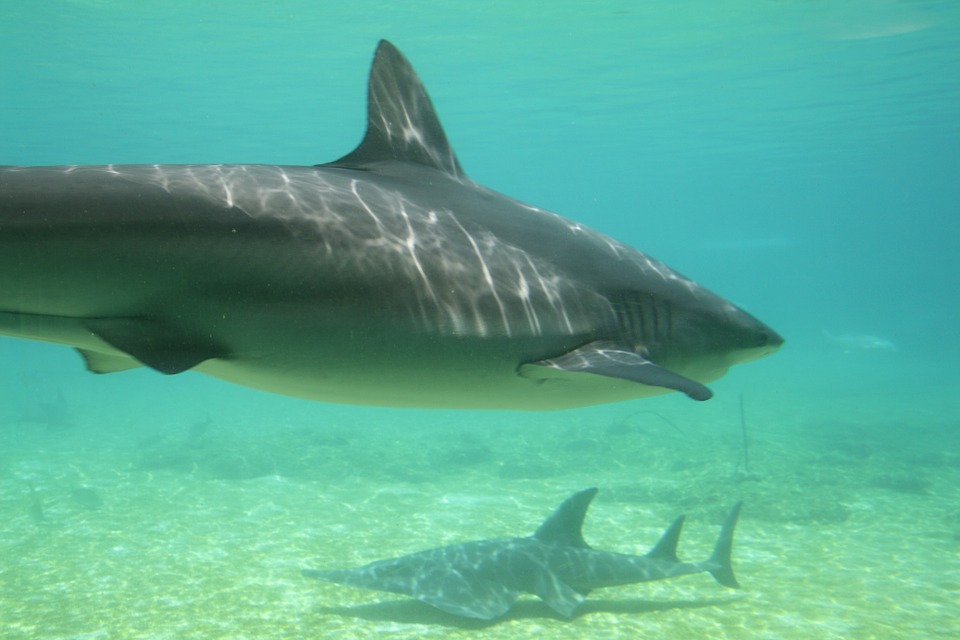
Both temperature and pH affect animals living in the oceans. As we pump out CO2 into the atmosphere, it readily dissolves in seawater, acidifying it. We know this has a devastating effect on coral, but one new study has found that in at least one creature of the sea, adaptive evolution is taking place[3]. Polychaete worms, also known as bristle worms, can live in waters around hydrothermal vents. These are areas of high carbon dioxide concentration and so very acidic. It was found that worms living in these conditions instead of the ambient surrounding water were significantly more “brooding” in their behaviour. The worms produced fewer and larger eggs, with the brooders being numbered at a ratio of nine to one in the acidic environment compared to the ambient one. The researchers concluded that the worms evolved these characteristics in response to environmental stress. Whether marine life can adapt and survive in the increasingly acidic oceans remains to be seen, as well as which organisms specifically, and how they will manage it.

There are mounting concerns that environmental, ecological, and climatic factors are being perturbed in a way that will be substantially detrimental to global biodiversity, issuing the onset of a new, and 6th, biodiversity crisis or mass extinction. This could affect the economy, industry and healthcare as well as the environment. New species are coming into being all the time, through evolutionary processes, but when the rate at which species are becoming extinct is 75% higher than the rate at which new species are appearing (speciation), traditionally over a period of 2 million years or so, then palaeontologists call this a mass extinction. The IUCN (International Union for Conservation of Nature) have undertaken the most recent and thorough extinction status analysis, but this is limited to only 2.7% of the nearly two million named extant species. This low figure calls into question any claims that we are entering a mass extinction, as the analysis simply doesn't cover enough species for us to be sure it gives a comprehensive picture of what is happening.

Far from extinction, some species are experiencing unexpected blooms, such as oceanic algae. Phytoplankton are a collection of algae, tiny plants, that represent the first level of the marine food chain, and are crucial to the ecosystems they are a part of. Seen in the Arctic replicating and amassing at a rapid rate, they are part of a bizarre and unexpected biological event that has never been seen before. Usually, phytoplankton spread in the summer when there is less ice, and snow coverings melt to form pools. As sunlight reaches these pools, the blooms form. However, these algae have now been discovered growing in the winter months, under the ice. Previously, this was deemed impossible, as without light they couldn't grow. But there’s now a new theory that global warming leading to thinning ice has allowed light to reach them – but as yet no conclusive evidence. We also are still unaware of how long this has been happening, and the extent to which it will continue.

From an economic perspective, global warming is predicted to have a direct economic cost, although working out what that might be is a huge task. An increase in droughts and flooding due to more extreme weather conditions, along with damage caused by sea levels rising, and other problems associated with the rising temperatures are could cost $200 billion for the EU alone if global temperatures increase by 3.5 degrees[4], as is currently expected. Heat-related deaths could also reach about 200,000 a year.
Learn more about Economic cost of climate change.

 2
2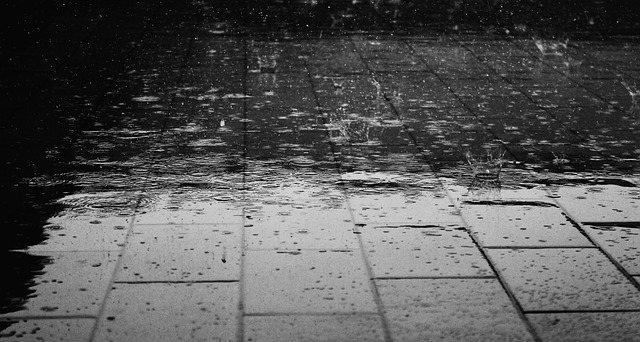
What can we do?
Projections suggest that the global energy demand will increase by 37% by 2014, and nearly double by 2050[5]. This means increasing the efficiency of current methods, and investigating new methods of collecting and storing energy is of paramount importance. But the question still remains, will scientific developments be able to keep up with increasing demand, and will they be able to do so in a sustainable way?

One of the challenges in renewable technology is efficiency. Aware of this problem, solar energy scientists have been looking at perovskites. Whilst a perovskite module is less efficient than the current silicon modules, it requires less energy to make than a silicon module, and thus perovskite modules have a substantially shorter energy payback time – the shortest, in fact, among existing options for solar power. So which is the better option?

One answer to our problems is to stop putting the carbon dioxide out there in the first place – and the other is to stop the climate change directly by geoengineering the climate, rather than reduce emissions. Geoengineering is a broad term that refers to doing anything big that mitigates worldwide anthropogenic climate change.
The possibility of deliberately changing our climate is both rather exciting and damn scary. Any technology with global impacts is terrifying, even if they’re good impacts; the potential for exploitation, accident or unexpected consequences is completely unquantified. However, some argue that we’re already performing a dangerous global experiment with planet earth by emitting our greenhouse gases and, in August and September 2006, Paul Crutzen (Nobel Prize in Chemistry) and Tom Wigley (NCAR) recommended geoengineering as a viable emergency response.


One approach to geoengineering is solar radiation management. Solar radiation management involves using reflective surfaces to reduce the amount of solar radiation that gets absorbed. These surfaces could be placed out in space (like giant mirrors), squirted into the stratosphere (like aerosols of absorbent particles), established in the troposphere (cloud brightening) or on the surface of the planet (surface whitening). But reflection creates a cooling effect on the planet surface - it doesn’t do the opposite of adding carbon dioxide: carbon dioxide creates heating throughout the planet, not just at the surface. The downside of this is that if the reflectors are suddenly removed, global temperatures will rebound to what they would have been if solar radiation management had never been implemented. It also means that other consequences of high carbon dioxide levels, like ocean acidification and melting sea ice, will not be relieved.


Another solution is carbon capture and storage, negative emissions technologies. Carbon capture and storage describes the removal of CO2 from the air, or collection of it at power stations. This carbon dioxide has to go somewhere, and instead of getting released could be locked away and stored underground or underwater. Estimates suggest up to 90% of our carbon dioxide outlet could be dealt with like this[6].
Carbon capture and storage includes both tweaking ecosystems to enhance natural carbon dioxide removal processes – growing trees, for example, or fertilising the oceans – and technological fixes like pumping liquid carbon dioxide into the deep sea or porous rocks. The main risks of carbon capture and storage are slow geological changes or manmade interferences, which could cause the re-release of stored CO2 with potentially devastating consequences.


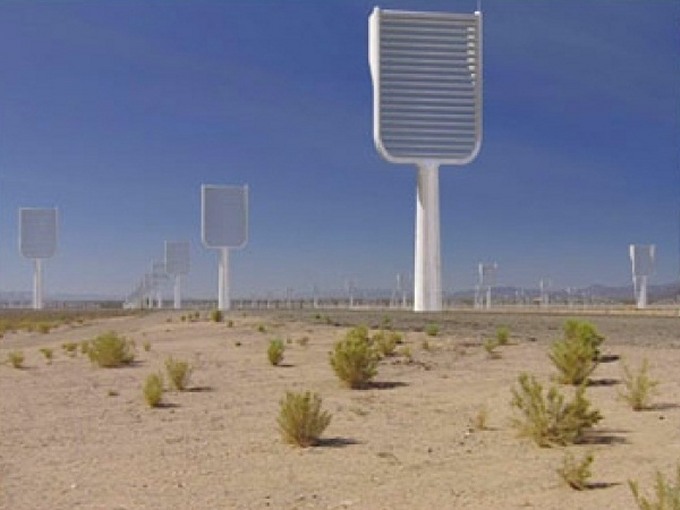
Solid sorbents including mesoporous zeolites, activated carbon and metal organic frameworks (MOFs) are of increasing interest for climate change remediation because of their ability to uptake and store carbon dioxide from power stations. They are more efficient than existing amine gas treating processes. Current application in inhibited primarily due to political and financial rather than scientific limitations. However, current research continues to explore the temperature- or pressure-based regeneration of solid sorbents and sequestration of carbon dioxide and works towards minimising the energy requirement of the systems so as to make them more cost effective.


Many private enterprises, governments and academics around the world are thinking about how to make carbon accounting work, and this means making decisions like which feedstock should be grown where to minimise the impacts on the environment.

Biofuels are a straightforward idea: grow crops that take in carbon dioxide, then burn them in power stations, releasing the same carbon dioxide, which is captured and stored underwater or underground. This is oddly rather like going back to gathering and burning wood – but on an industrial scale[7]. Fast-growing, hardy, energy-rich plants like miscanthus are in the lineup for bioenergy. There’s only one problem: we can’t eat electricity. The areas of land required to grow all these plants for bioenergy would be huge (one estimate suggests increasing the US biofuel area by a factor of 20 could have the potential to remove a third of the emitted carbon dioxide a year[8]), and using land for fuel means using less land for crops, as well as using up massive volumes of water. This could have huge implications on world hunger, and domestic food prices would certainly rise.

Trees, plants and waste food can alsio be broken down into sugars and used to produce hydrogen. Other methods of hydrogen production are either very expensive, inefficient or require fossil fuels to fuel the production of hydrogen. Scientists at the University of Virginia have created an enzyme which can break down plants into useful sugars which can then produce hydrogen. The challenges remaining are scaling up the process to be used in large quantities and maximising its efficiency.



Eating no or less meat has often been suggested as the most impactful thing an individual can do to help prevent climate change. It requires huge amounts of land to raise animals, especially cattle, and is hugely calorie, energy, and water inefficient. In addition, climate change worsens food production, decreasing efficiency. As we limit food miles to save energy, the price of meat and animal products will increase, making it less and less sustainable and accessible. Could we be forced to become vegetarian or vegan in order to sustain our food source? Reducing organic vegetable consumption could also help, as organic crops use up more land so produce less food per unit area.


The remaining problem to solve is who should be in charge? Policing the world's energy policy and environmental remediation is no mean feat, and the huge interlinkedness of the world's climate, ecology and environment makes it even trickier. Attempts to solve problems can also conflict. For example, contaminated land remediation might involve adjusting the pH or adding chemicals to soil in one region to improve its quality… yet that treatment could have negative consequences to nearby land if it leaks into groundwater and gets transferred. Large scientific remediation projects like geoengineering to combat the effects of anthropogenic climate change will also effect different places in different ways, causing droughts and floods and uneven heating and cooling to average a lower global temperature - there are winners and losers… so who decides? These effects are hard to understand, difficult to predict and politically awkward to legislate.


This article was written by the Things We Don’t Know editorial team, with contributions from AlmeidaJ, Ed Trollope, Jon Cheyne, Cait Percy, Johanna Blee, Grace Mason-Jarrett, Jon Tennant, Rowena Fletcher-Wood, Joshua Fleming, and Holly Godwin.
This article was first published on 2015-08-27 and was last updated on 2019-06-21.
References
why don’t all references have links?
[1] Rasmussen, C. NASA Study Finds Earth’s Ocean Abyss Has Not Warmed. JET Propulsion Laboratory, California Institute of Technology, 2014
[2] Jobling, Susan, et al. Widespread sexual disruption in wild fish. Environmental science & technology 32.17 (1998): 2498-2506."
[3] Lucey, Noelle Marie, et al. "To brood or not to brood: Are marine invertebrates that protect their offspring more resilient to ocean acidification?." Scientific Reports 5 (2015): 12009.
[4] Graeber, D.J. EU wary of economic hit from climate change. UPI, 2014
[5] World Energy Outlook 2014 Executive Summary, OECD/IEA, 2014.
[6] Climate Geoengineering - Carbon Capture and Storage, Michael Stephenson, p14, Bulletin of the Environmental Chemistry Group, Royal Society of Chemistry, July 2016.
[7] Stephenson, Michael H. Returning carbon to nature: coal, carbon capture, and storage. Newnes, 2013.
[8] Smith, Lydia J., and Margaret S. Torn. Ecological limits to terrestrial biological carbon dioxide removal." Climatic Change 118.1 (2013): 89-103.
Blog posts about climate change






Recent climate change News
Get customised news updates on your homepage by subscribing to articles













